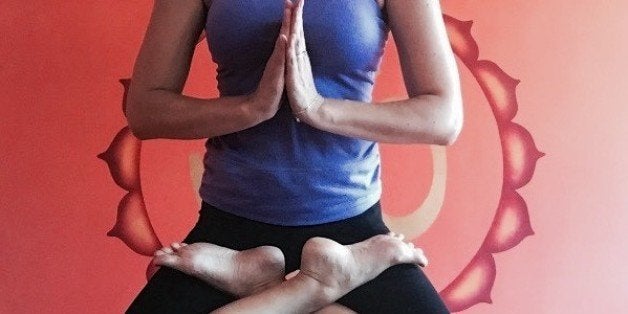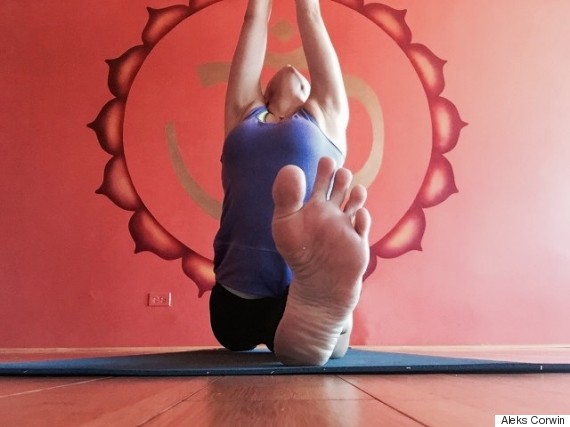
I first tried to sit still and clear my mind in college, after a nasty breakup where I was consumed with heartache. For weeks, I moped around the city playing whack-a-mole against all the feelings of betrayal and hurt that were popping up in my head, but I had taken enough yoga classes at that point to know that the nasty things I wanted to say to my ex were a poison I was pouring down my own throat.
I wanted meditation to be the way out, to interrupt the subconscious train of destructive patterns and surround me with all its benefits -- the decreased heart rate, the lower blood pressure and the general feelings of improved health and mental clarity.
But how?
"I'm really bad at meditating," I complained to my friend Eric after a few fidgety attempts. "I hate sitting still. My back hurts, my shoulders ache, my feet always fall asleep."
Eric happened be a Feldenkrais instructor--a type of holistic movement therapy that aims at bringing people more fully into their bodies. Think of it as yoga's kin.
"Meditating while sitting still is unnatural," he said without missing a beat. "Of course it's hard. I never sit still when I meditate," he added.
"Wait, what?" My eyes crossed. "You can meditate without uh, sitting still? That counts?"
Eric rolled his eyes.
"Yeah, especially for people who have mobility issues--joint pain, muscle weakness--moving meditation is much more accessible."
Holy crap!
That feeling of sinking into a deep exhale when I hit my first down dog of the day--that was meditation. That full inhale I focused in on to help hold me up in Warrior II? That was meditating too. Turned out, I did know how to meditate!

Some people, usually people who have trained long and hard, can meditate while sitting still. But for a lot of us, moving is the best gateway. Those movements help maintain focus on something beyond our day-to-day concerns and our mind naturally gravitates towards what it is doing. In yoga, breath cues are integral to the practice of stretching, flexing, and holding--it provides a focal point for whack-a-mole minds of all shapes and sizes to latch onto.
When you have a sequence of connected moments where you have stopped thinking about what you need to pick up at the store, the horrible things you want to say to an ex, and the ten pounds you want to lose, you have successfully meditated. When you can string these moments on demand, you develop a new tool in your arsenal to fight existential angst, anxiety, and stress.
Yoga teaches that there is prana coursing through our bodies--it's also called the life force, or Qi in the Chinese tradition. Having a controlled breath means you can get a lasso around your prana. The breath is what bridges the gap--it is the gateway to the mind-body connection. If you can regulate your breath first, you have a toehold in working the muscles that regulate your mind.
Any ritual that derails that thought train barreling around your brain, whether it be planning for the future or reliving the past, can be meditation. Whether it's folding laundry or standing on your head--all you need is the proper intent.
The golden pot at the end of this meditation rainbow is a sneaky feeling that floods the senses when unwanted thoughts come and you have the power to easily release them because you are happily focusing on your breath. A calm, focused presence arises when you don't have to be or do something else.
Pausing and consciously relaxing--even for a minute--shifts us away from the defensive and aggressive sympathetic nervous system, which is responsible for our fight or flight impulses. Most of us aren't even aware of the low-level fight or flight anxiety that follows us around all day until we get a break from it.
Meditation is a pattern interrupt--and whatever skillful means you can use to bring your thought to your breath will derail the unconscious brain train rumbling around inside your head.
So get fixated on your breath--get all OCD about coming back to every tiny sensation of inhaling and exhaling--feeling the air as it enters your nostrils, feeling the skin stretch at your ribcage as your lungs expand, feeling the minuscule movement as you pause and then take in just a tiny bit more oxygen.
If sitting still doesn't work for you, but you want to have a calmer mind, yoga is one of the best ways to start developing the muscles of attention so you can step off the thought train whenever you need a break.